I’m sitting in the rainforest of Papua New Guinea, and I’m surrounded by sound.
Unknown multitudes of insects stridulate so loudly that the air nearly vibrates with their calls. Clear, flutelike birdsong rings out between the rhythmic chirps of unseen frogs, pounding out a steady beat from the forest floor. Something scratches faintly in the undergrowth as water droplets patter onto leaves.
But this natural symphony I’m hearing isn’t live — I’m listening to audio recordings gathered the previous day as part of a scientific expedition. And those sounds thrumming through the headphones are our data.
Staring intently at the computer resting on the wooden floor of our hut, Eddie Game cues up the multicolored spectrogram. “Now you can actually watch what you’re listening to,” he says, as the early-morning orchestra of the rainforest flows across the screen in front of us.
We’re seven villages past the end of the road in the Adelbert Mountains — a remote and rugged range along Papua New Guinea’s northern coast — where Nature Conservancy scientists are deploying acoustic sampling recorders to assess if their local land use planning efforts are adequate to protect some of the region’s extraordinary biodiversity.
And those sounds thrumming through the headphones are our data.
The Basics of Bioacoustics
The humid air is heavy with noise. Sounds saturate the forest around us — insects buzz, frogs yelp, birds shriek, mammals scuttle, and bats click. Even the trees seem to pulsate with sound, as the din ricochets off the high canopy and cascades back to earth on a tide wave of noise.
That noise is bioacoustics — every whinny, chirp, and grunt uttered into the forest is a snippet of communication.
“All of the animals we are hearing are vocalizing at slightly different frequencies or with distinct acoustic patterns,” explains Game, the Conservancy’s lead scientist for the Asia Pacific Region, as we trek through the undergrowth on our way to deploy a recorder. “They all have their own niche to communicate with each other.”
Scientists can use the soundscape of a location as a way to assess its health: crudely, the more complex and complete the soundscape, the healthier the ecosystem and the greater the biodiversity.
“You would expect the soundscape to be really full in an intact forest, with something occupying a lot of the different frequencies,” says Game. “In a degraded forest you might have a lot of sound, but not occupying as much of the spectrum.”
But before you can use the soundscape to assess biodiversity, you have to record it.
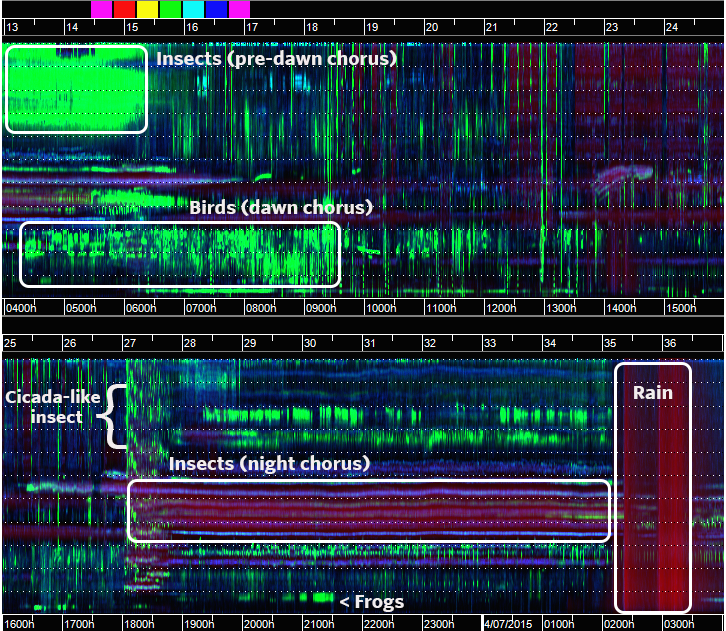
Setting Up the Sensors
We’ve been hiking for just over an hour, following a narrow trail that climbs up a steep-sided ridge from the wide riverbed below. Sunlight breaks through the cocoa trees lining one side of the path, filtering into the impenetrably dense forest.
Suddenly our guide, Jonathan, stops and points into the shadowed trees to our left. “This is the hunting zone,” he says. We turn into the forest and bushwhack our way along a slight rise.
“Let’s put one here,” says Zuzuana Burivalova, a tropical forest ecologist at Princeton University, pointing to a sturdy tree at the edge of a faint clearing. A battalion of tiny black ants skitters skyward up the trunk to a nest hole some 6 meters above the ground.
Conservancy conservation geographer Timothy Boucher checks our coordinates against the map, holding his GPS aloft to catch signal from beneath the trees. “Yep, this looks right,” he says.
Let’s strap it up properly, just in case a cuscus jumps on it.
Eddie Game
Game and Burivalova set to work unpacking the gear, digging through our rucksacks for rope, straps, and two types of recorders: acoustic and ultrasonic. The acoustic recorders capture sounds between 1 and 24 kilohertz, roughly within the normal range of human hearing, including vocalizations from birds, some bats, frogs, mammals, and most insects. The ultrasonic recorders pick up sound up to 96 kilohertz, allowing us to gather data on bats and insects that vocalize at frequencies beyond the range of human hearing.
They check the recorders — SD cards in place, batteries secure, power on — and then seal the sides with green duct tape. “Just a little extra protection against the elements,” says Game.
As Boucher holds the recorder against the tree, Game and Burivalova thread rope through the holes and around the trunk, careful to avoid the light sensor on the side of the box. Then Game ratchets an extra strap down over the recorder and winds the spare end around the trunk.
“Let’s strap it up properly,” he says, “just in case a cuscus jumps on it.”
With both acoustic sampling devices in place, we push our way back through the muddy undergrowth to the trail. The recorders will sit out overnight and all the following day, capturing the soundscape of the forest.
Two deployed, six to go.
Acoustic Sampling for Conservation Planning
For more than 15 years, The Nature Conservancy has helped communities in the Adelbert Mountains create conservation land use plans, allocating different areas of land for village development, hunting, gardening, forest use, and conservation.
Anecdotal reports suggest that the system is working, but the Conservancy wants to gather hard evidence to make sure that the conservation areas are large enough to sustain key species, including cassowary, bandicoot, and birds-of-paradise.
“But it’s not just about listening for specific species,” says Game. “There’s something about the whole soundscape that is important, because it’s a gross measure of biodiversity.”
This expedition is, in part, an experiment. Game, Burivalova, and Boucher suspect that acoustic sampling could be a cost- and time-effective solution for gathering conservation data in rugged, hard-to-access locations. “This is a terrific way to gather scientific evidence and look at the impact of our work in a way that doesn’t require a huge team of taxonomic specialists to be in the field for weeks on end,” says Game.
The scale of the project is also experimental; typical acoustic sampling studies record shorter time series, like one-minute intervals, in only a few locations. “I don’t know many people that have tried to do full 24-hour recordings across a landscape scale,” he adds, “especially in remote tropical forests.”
If it works, this landscape-scale acoustic assessment could help inform conservation decisions that rely on biodiversity metrics, here in Papua New Guinea and elsewhere.
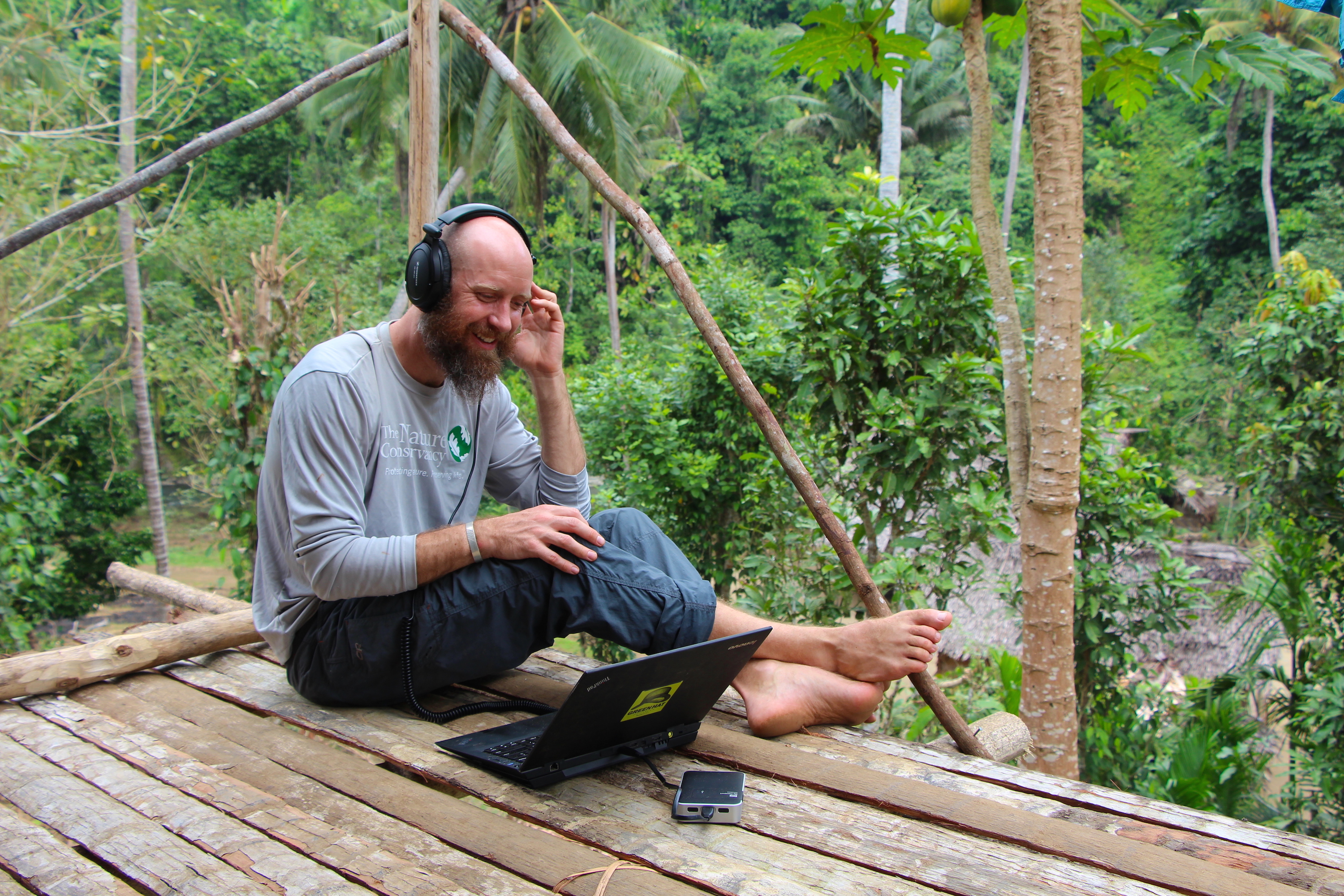
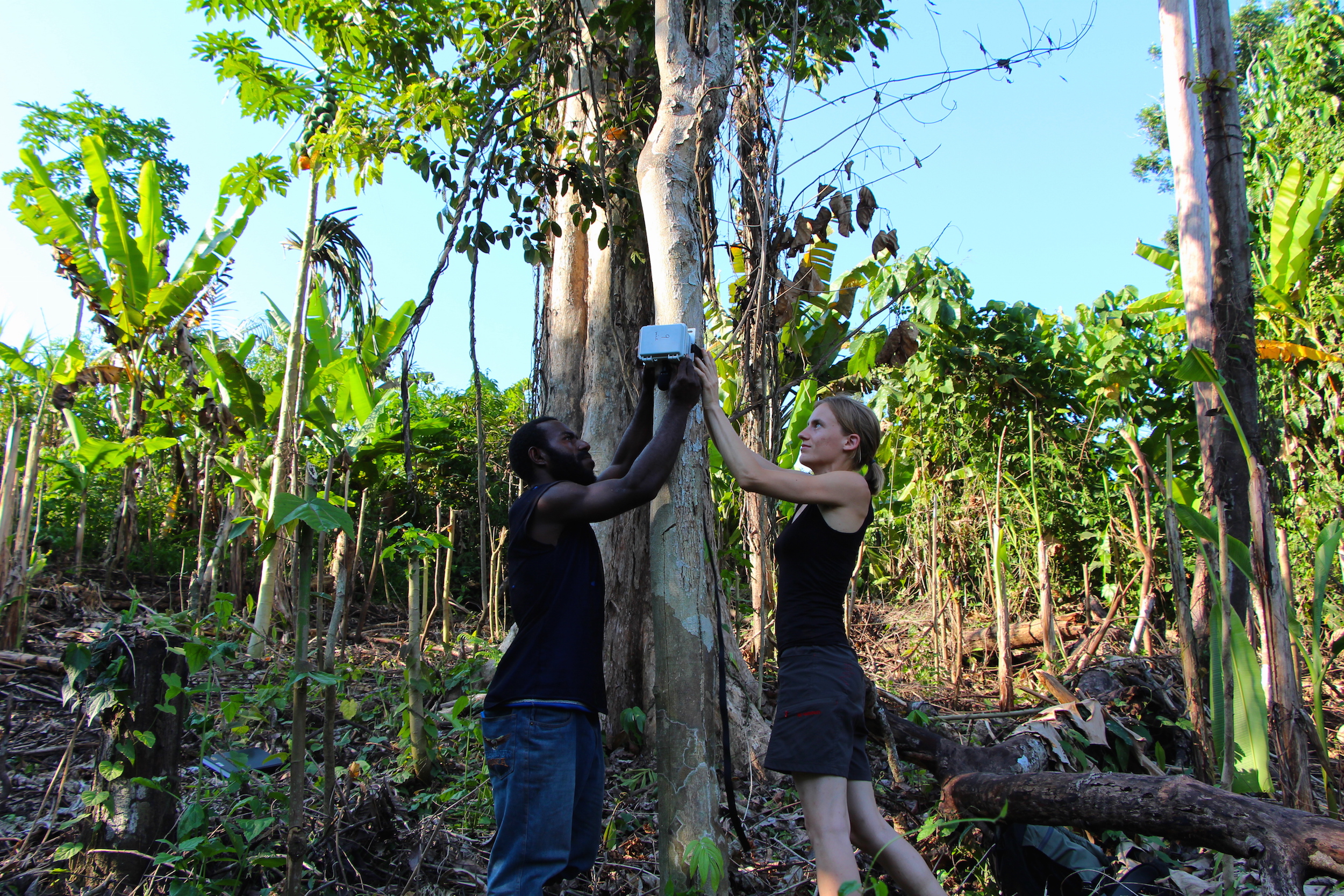
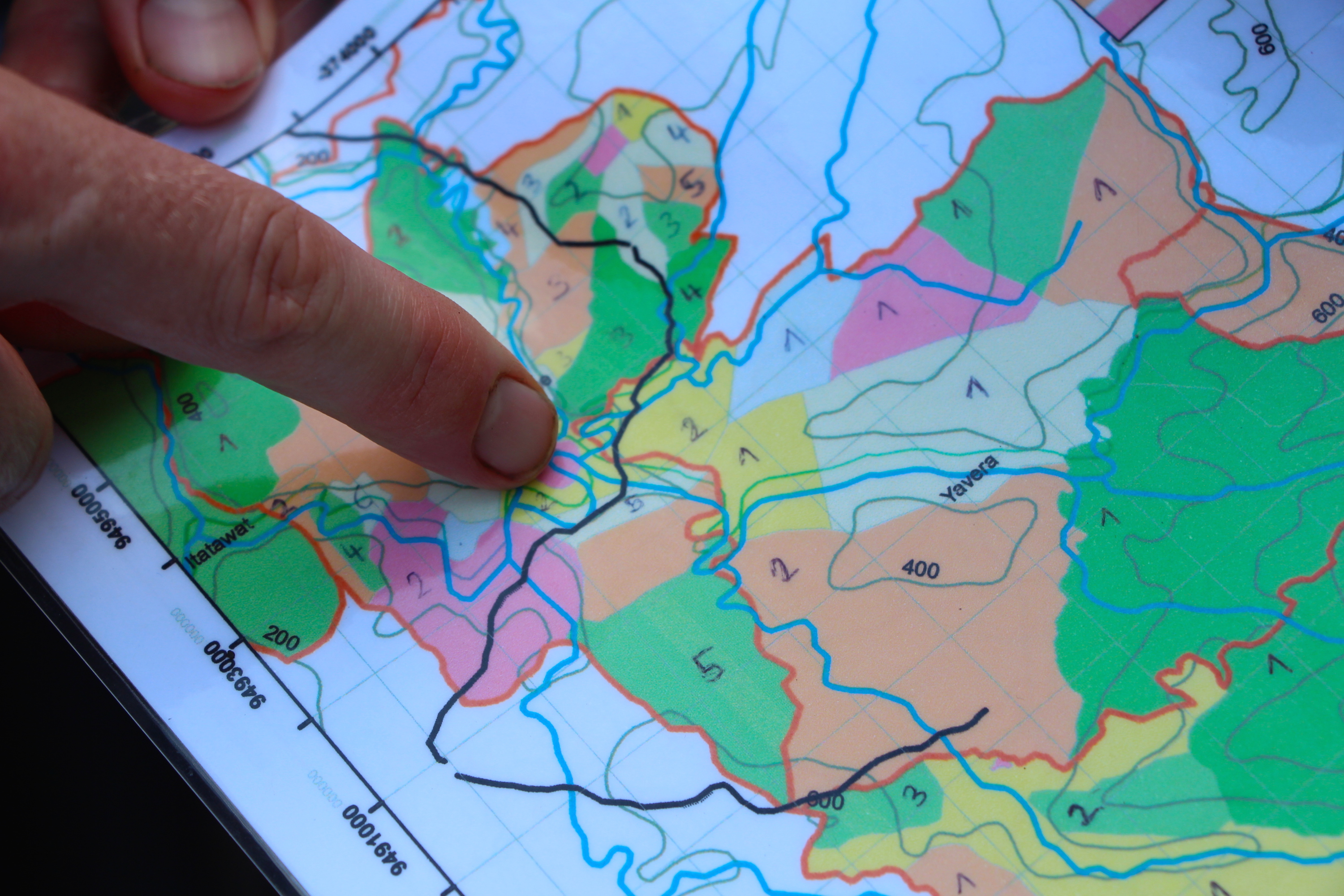
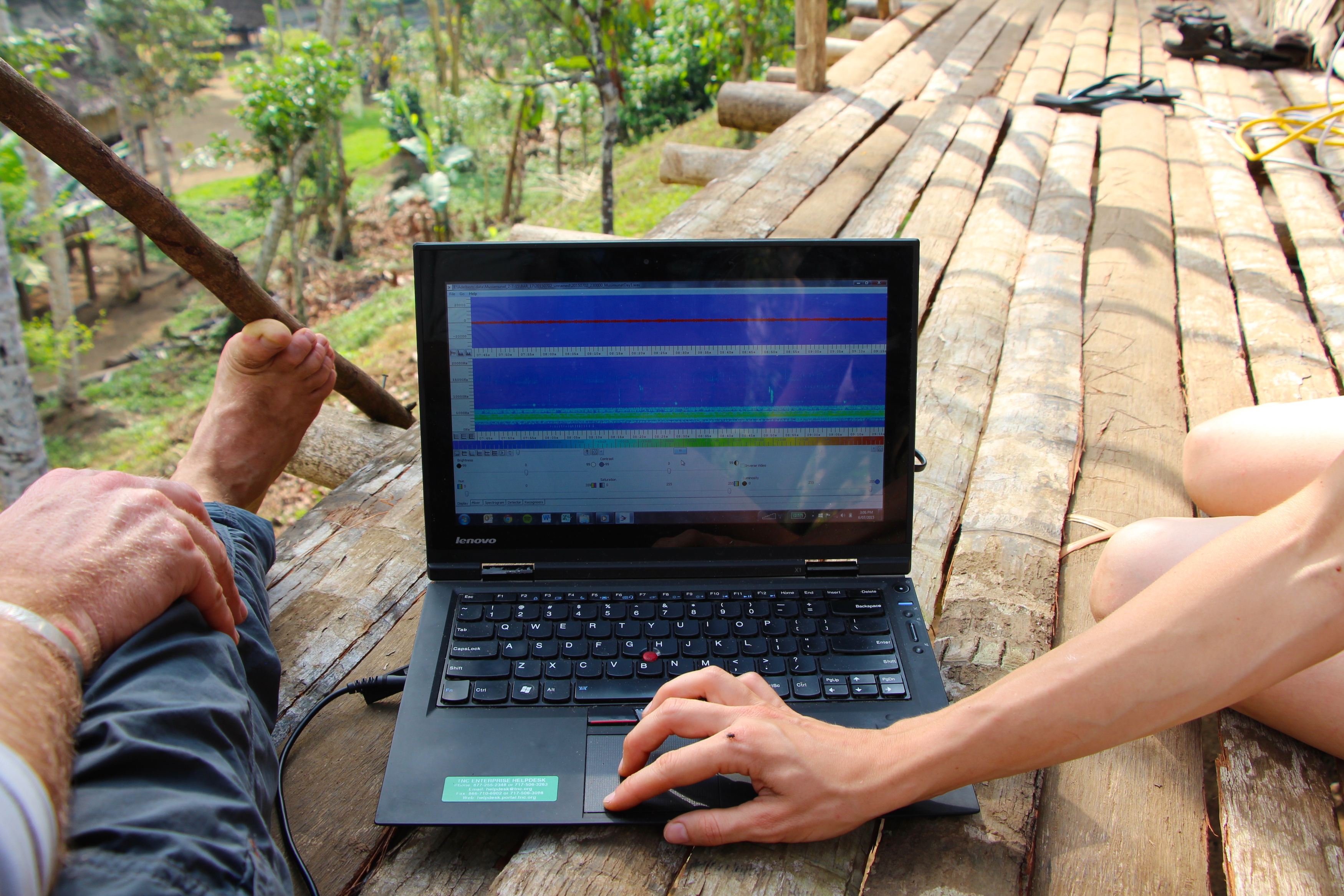
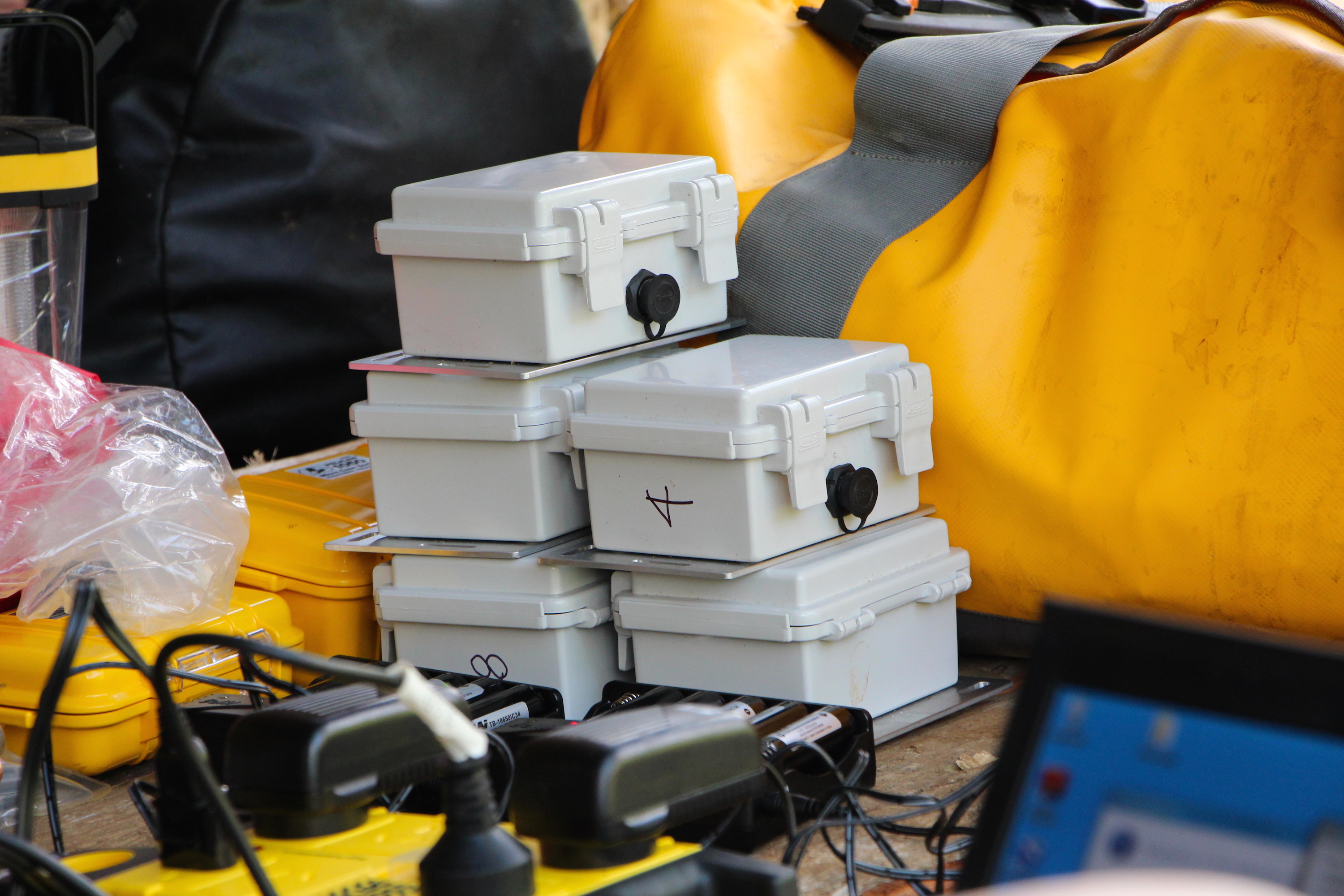
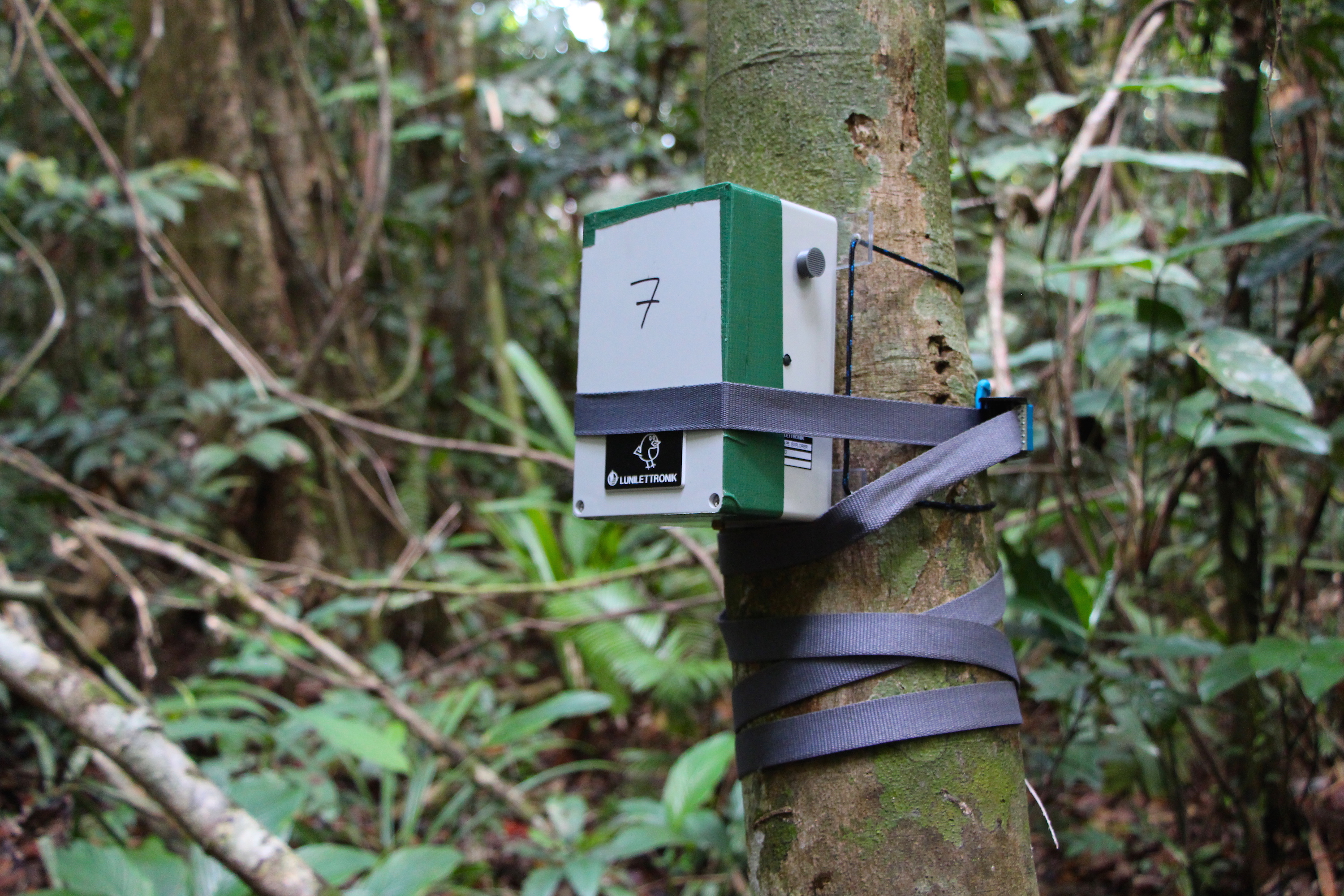
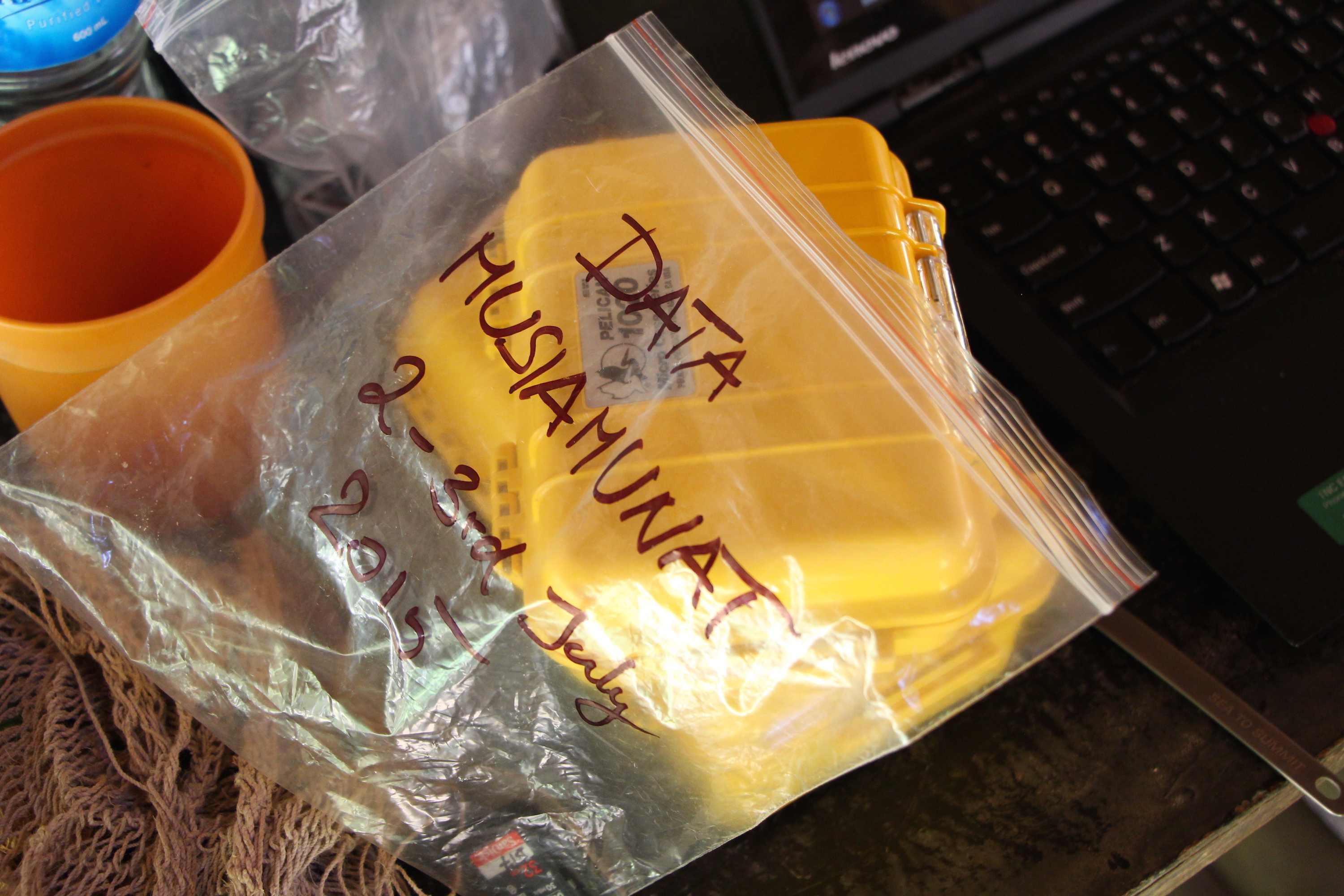
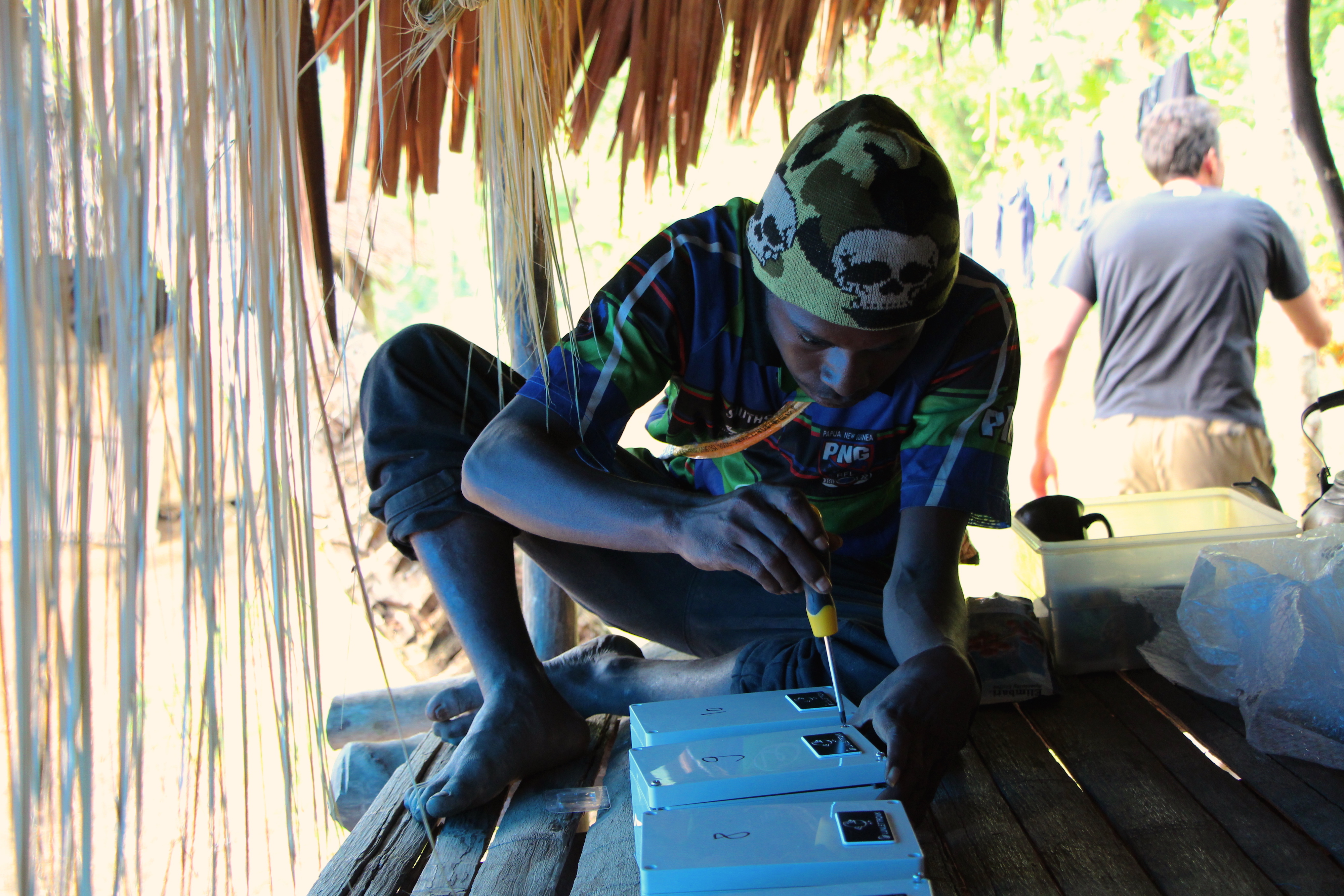
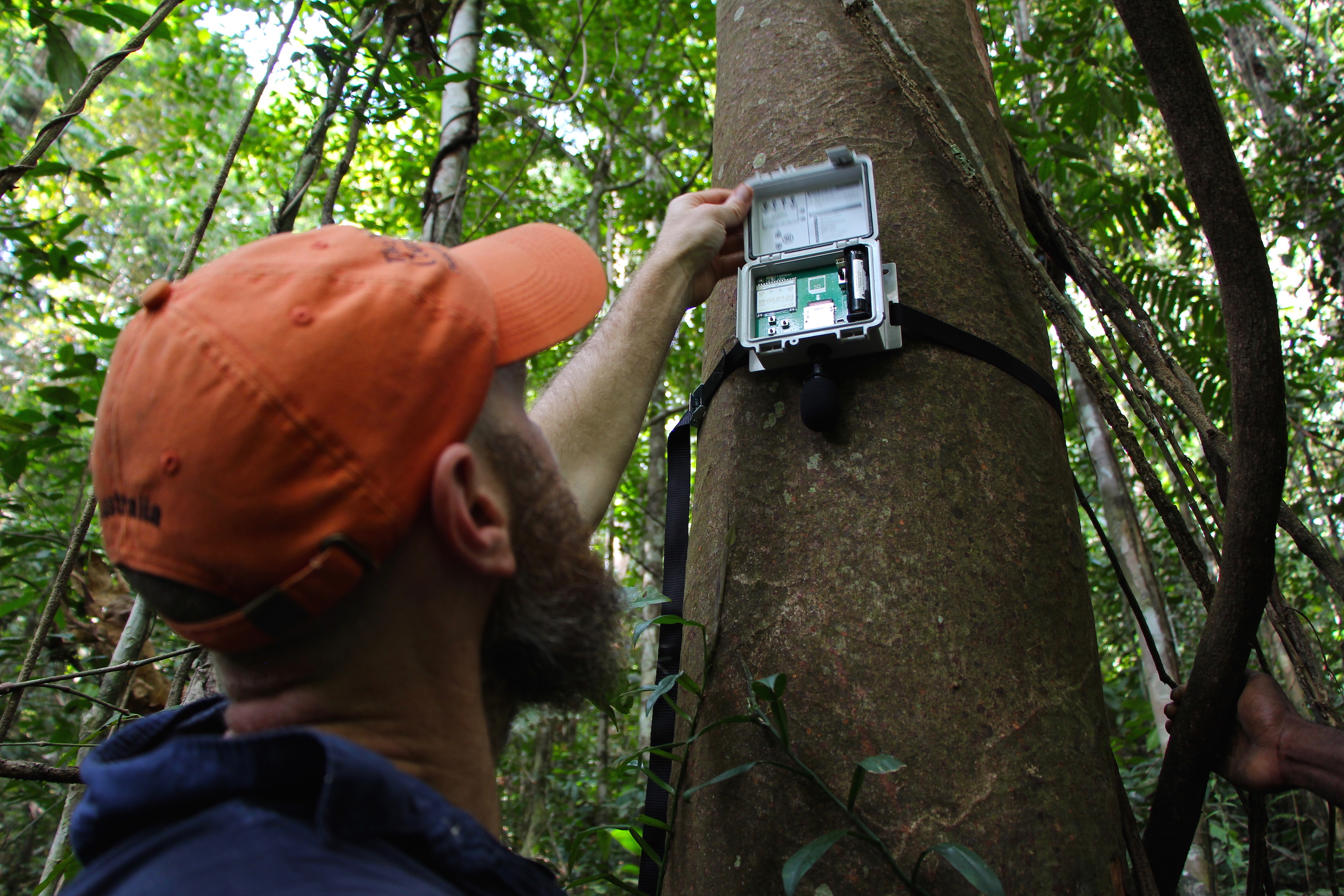
The Soundscape of the Forest
Back at camp, the local conservation rangers have arrived with another batch of recorders that we deployed several days earlier. Superbly skilled at navigating the forest, they’ve been retrieving the recorders for us, allowing us to double the amount of data we can gather.
Burivalova unscrews the lid of the first recorder and pops the SD card into Game’s laptop. Huddled around the one set of headphones, we take turns listening.
“I love this honk that comes in in a few seconds time,” says Game. “Do you hear that? Hooooonk. I wonder what it was?”
“I can hear an owl in the distance!” says Boucher, grinning while he passes the headphones on to Burivalova. The rainbow spectrogram flows along the screen, blips of color spattered across the frequency spectrum.
“You can actually see the sounds come up at different frequencies,” Burivalova says, “and you can definitely hear all of the layers. That’s really cool.”
As night fades imperceptibly into day, the swell of sound rises from a steady hum into a full-blown torrent of noise, every audible frequency claimed by assertive grunts, whistles, chirps, hums, squawks, cries, and croaks.
We’ve been surrounded by these sounds for days, but it’s not until we hear our data that we really begin listening to the forest — to a performance uninterrupted by our own presence.
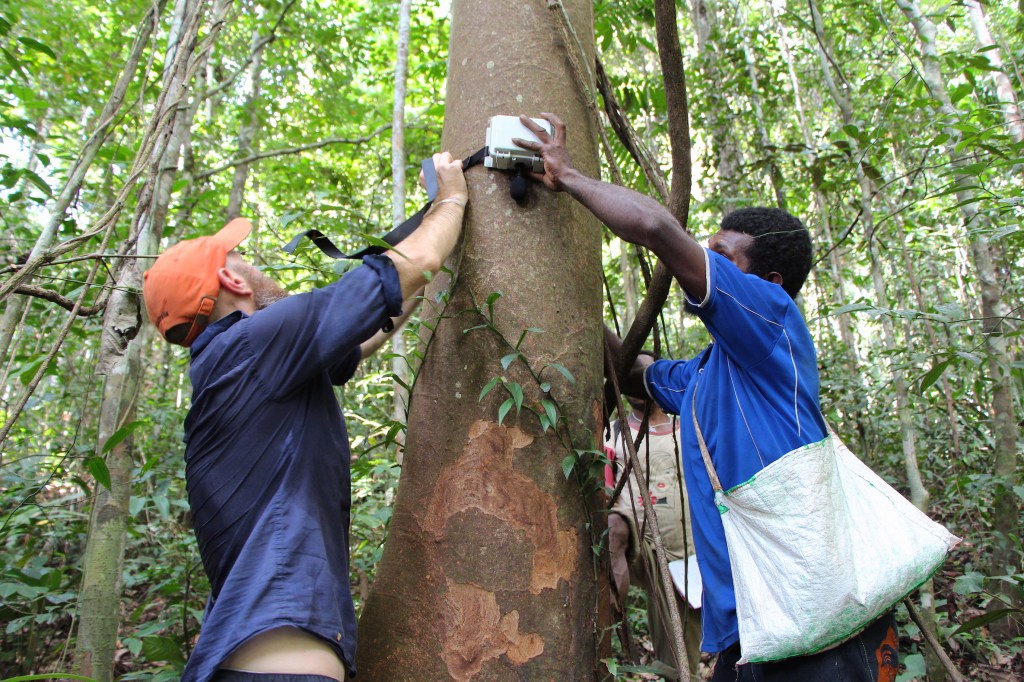



Are their sound recordings of particular species that would allow you location and population information… could you do narrow range scan to see if that species were present in your sample?
Thank you, we have son in Melbourne suburbs and enjoy your wildlife, praying for rehabilitation of
the rescued ones from the fire…another interesting study of man’s vicegerent responsibility since the ark, AU is the new ark with so many unique creatures, may restoration efforts help restore the balance
Between man’s activities and nature!
I am very interested in knowing the brand and model of the recorders used in the projects. Thanks a lot for your help.
I think it was cool ,very cool
Wonderful work. I have a questions. Is there any way to know the brand of record machine used in the forest?
Great to see (or hear!) such innovative approaches being used to measure the health of the world around us. Similar work is underway, lead by Dr. Mark Butler and his PhD student Jack Butler (no relation) at Old Dominion University, to quantify the outcomes of sponge restoration on the ‘hard bottom’ ecosystem of Florida Bay. Seems like we need to listen more closely to what nature is trying to tell us!
https://www.flseagrant.org/wp-content/uploads/SGEF_215_SpongeRestoration_web1.pdf
http://butlerj1.wix.com/jackbutler#!characterizing-underwater-soundscapes/ccgt
What specific hardware do you use for this? Mfgr. , model number, etc.
Would this work (provide useful data) if installed on either side of an FAA NextGen flight path?
NextGen noise is destroying human and wildlife habitat around many cities around the world. We’re always looking for useful (affordable) equipment to help in the fight.
Thanks
Hi David,
The acoustic recorders we used were Bioacoustic Audio Recorders from a Brisbane-based company called Frontier Labs.
Hope this helps,
Justine